Philips PUS8359 in 50" is a fairly simple television, yet sufficiently advanced for a large portion of consumers. Its biggest distinguishing feature (as well as the entire brand) is the Ambilight backlighting, which at this price point is definitely an added value and something that may encourage a purchase. In this price range, it's hard to find anything that will give us flawless picture quality, although we can look for units that offer something more. And in our opinion, this tested television is precisely that. In this context, we pay particular attention to the quality of tonal transitions, colour reproduction after calibration, and the television's performance when connected to a computer. Thanks to its low input lag, a casual gaming session will be quite enjoyable. However, we must also point out the unit's drawbacks. Without a doubt, these will be low luminance in HDR content and narrow coverage of the DCI-P3 colour space. Although it’s worth noting that the dynamic tone mapping feature works very effectively. We will also briefly mention the contrast and black levels, which, while not exceptional, are definitely better than in units based on IPS/ADS panels. The operating system of the television can be considered one of the better ones, although it is in development and lacks many features, which we will discuss more in a dedicated paragraph. It also does not have as wide a library of applications as its competitors, although this will likely change soon. Who is the PUS8359 for? One could say it’s for anyone looking for a balance between quality and price.
- Matching (Score)
- Our verdict
- TV appearance
- Where to buy
- Contrast and black detail
- HDR effect quality
- Factory color reproduction
- Color reproduction after calibration
- Smoothness of tonal transitions
- Image scaling and smoothness of tonal transitions
- Blur and motion smoothness
- Console compatibility and gaming features
- Input lag
- Compatibility with PC
- Viewing angles
- TV efficiency during daytime
- Details about the matrix
- TV features
- Apps
- Playing files from USB
- Sound
Philips PUS8359 (VA) vs Samsung U8000F (VA)
Direct compare
PUS8349 / PUS8359
U8000F / U8092F
Available screen sizes: 50”


Panel type: LCD VA
Resolution: 3840x2160
System: Titan OS
Model year: 2024
Complete the survey to find out the result

Panel type: LCD IPS
Resolution: 3840x2160
System: Tizen
Model year: 2025
Complete the survey to find out the result

Overall rating
5.4
5.7
Movies and series in UHD quality
5.2
5.7
Classic TV, YouTube
5.4
5.9
Sports broadcasts (TV and apps)
4.5
5.5
Gaming on console
6.4
6.5
TV as a computer monitor
6.0
6.0
Watching in bright light
4.7
3.8
Utility functions
5.2
5.5
Apps
6.2
8.7
Sound quality
6.1
5.7
Complete the survey to find out what fits your preferences
Advantages
Colour representation after calibration
Dynamic tone mapping function - recovers details that are too bright for the television
Smooth tonal transitions
Very good compatibility with computers and consoles - low input lag, chroma 4:4:4
Great blacks and contrast (VA panel version)
Advanced Smart system: Tizen
Excellent for text work - displays fonts beautifully
Basic features for gamers - VRR and ALLM
Low input lag
Disadvantages
Low brightness of HDR materials
Missing a significant number of essential applications
Poor viewing angles
Low brightness
Worse viewing angles than the version with an IPS panel (Obvious, isn't it? 😉)
Infrared remote
Inferior appearance compared to its predecessor
Our verdict
Samsung U8000F with a VA panel is a television that can pleasantly surprise in its class – of course, if we know what to expect from it. The greatest strength of this variant is definitely the quality of blacks. Compared to the version with an IPS panel, the difference is huge – the image gains depth, contrast looks significantly better, and evening movie sessions no longer resemble watching content through a grey filter. For a device from the budget segment, this is really a nice surprise. Additionally, we have the proven Tizen system, which not only runs smoothly but also offers access to a full range of applications, support for SmartThings, and voice assistant (via an app). The PC mode and console connection work flawlessly – fonts are clear and readable. Plus, there are basic features for gamers, such as VRR and ALLM, which – although they won’t turn this television into an esports machine – are perfectly adequate for occasional gaming.
Of course, like any construction in this budget, the U8000F with a VA panel also has its limitations. Viewing angles are not its strong suit – watching the image from the side reveals a drop in quality. However, it’s hard to regard this as a serious drawback – because you gain some advantages elsewhere. Better blacks always come with a bit less flexibility in setting. When it comes to HDR, we have a rather symbolic approach – the brightness is too low to talk about a true “wow” effect, and the color palette is limited. But let's face it – that’s not the reason you buy such a television. So if you’re planning to purchase the U8000F, we definitely recommend opting for the variant with the VA panel. It’s still a very basic model, but in this version, it offers more than you might expect – especially in terms of black quality. And in this price range, that’s quite a lot.
TV appearance




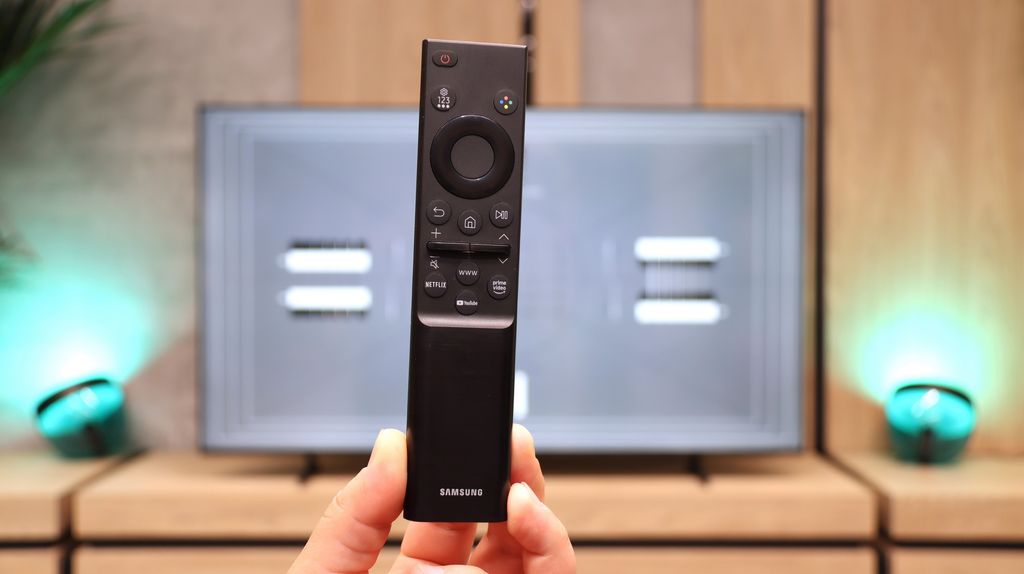
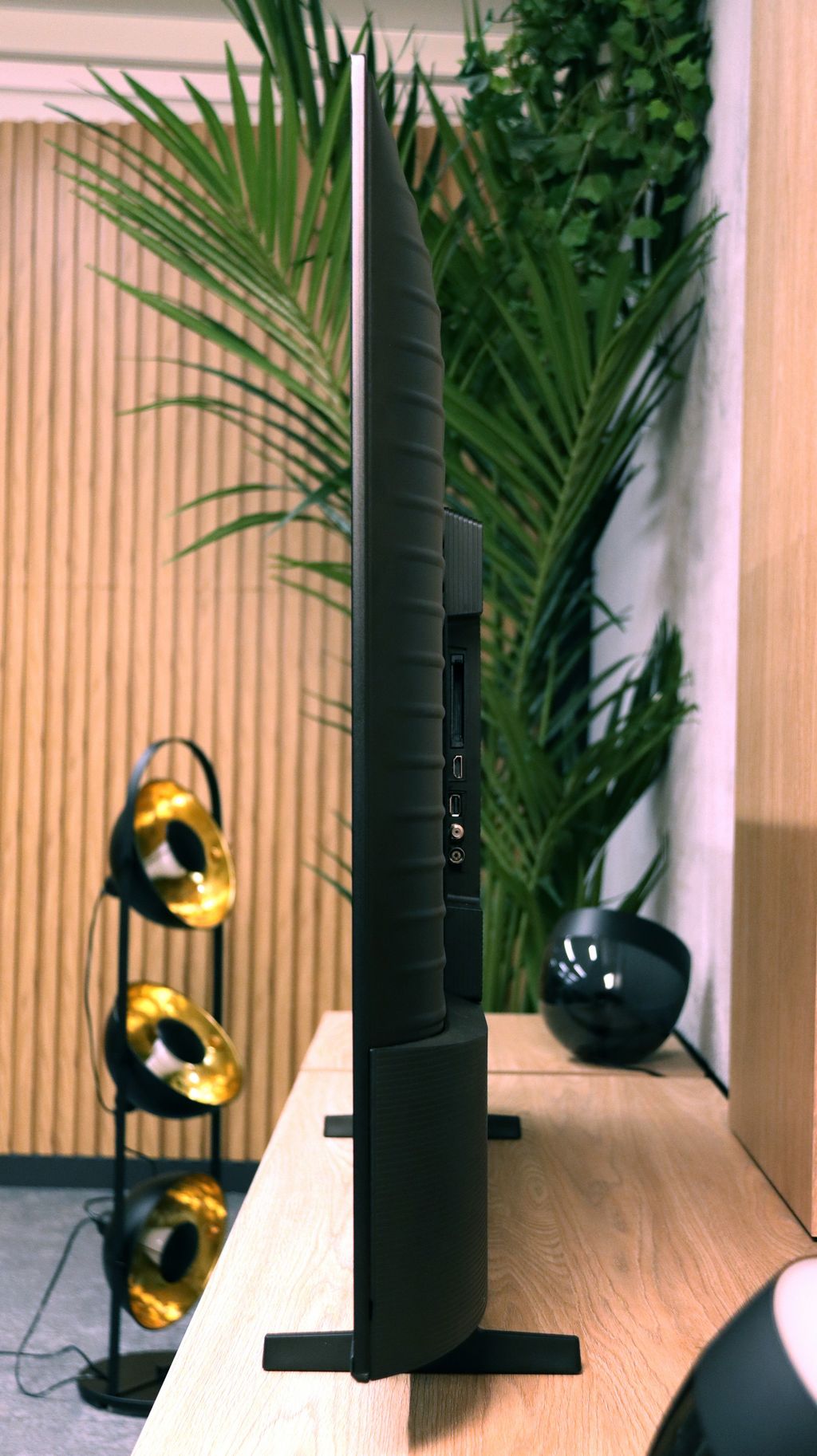
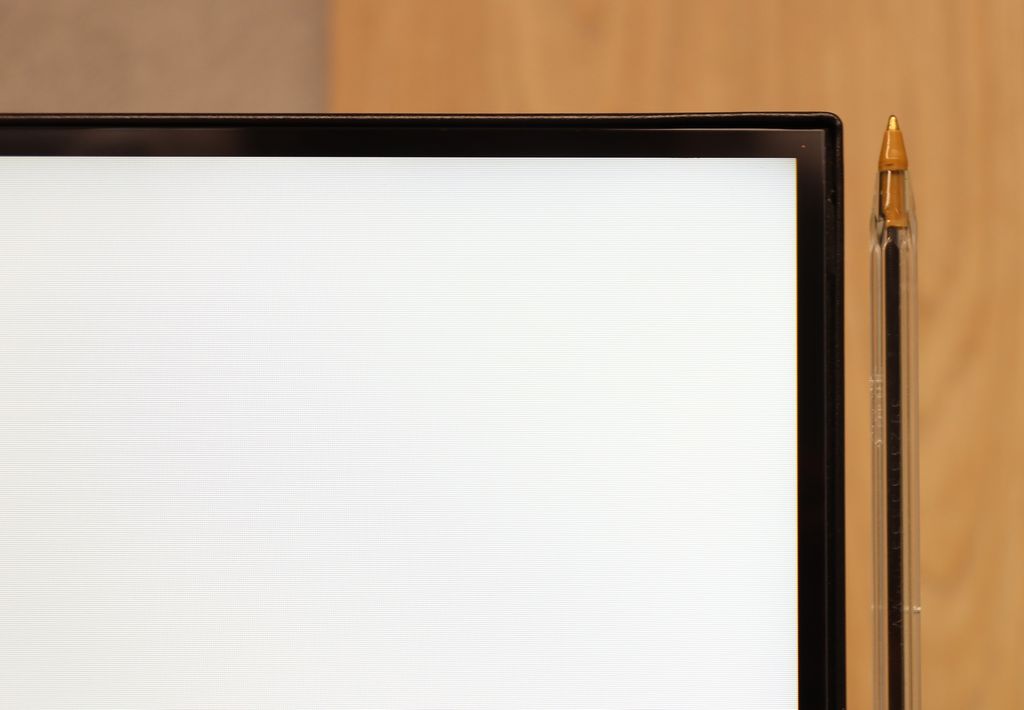
Contrast and black detail
5.6/10
5.3/10
Local dimming function: No
Local dimming function: No
Contrast:

Result
4,400:1

Result
4,950:1

Result
4,500:1

Result
5,650:1

Result
3,800:1

Result
4,600:1

Result
4,150:1

Result
3,900:1

Result
3,750:1

Result
3,400:1
Halo effect and black detail visibility:

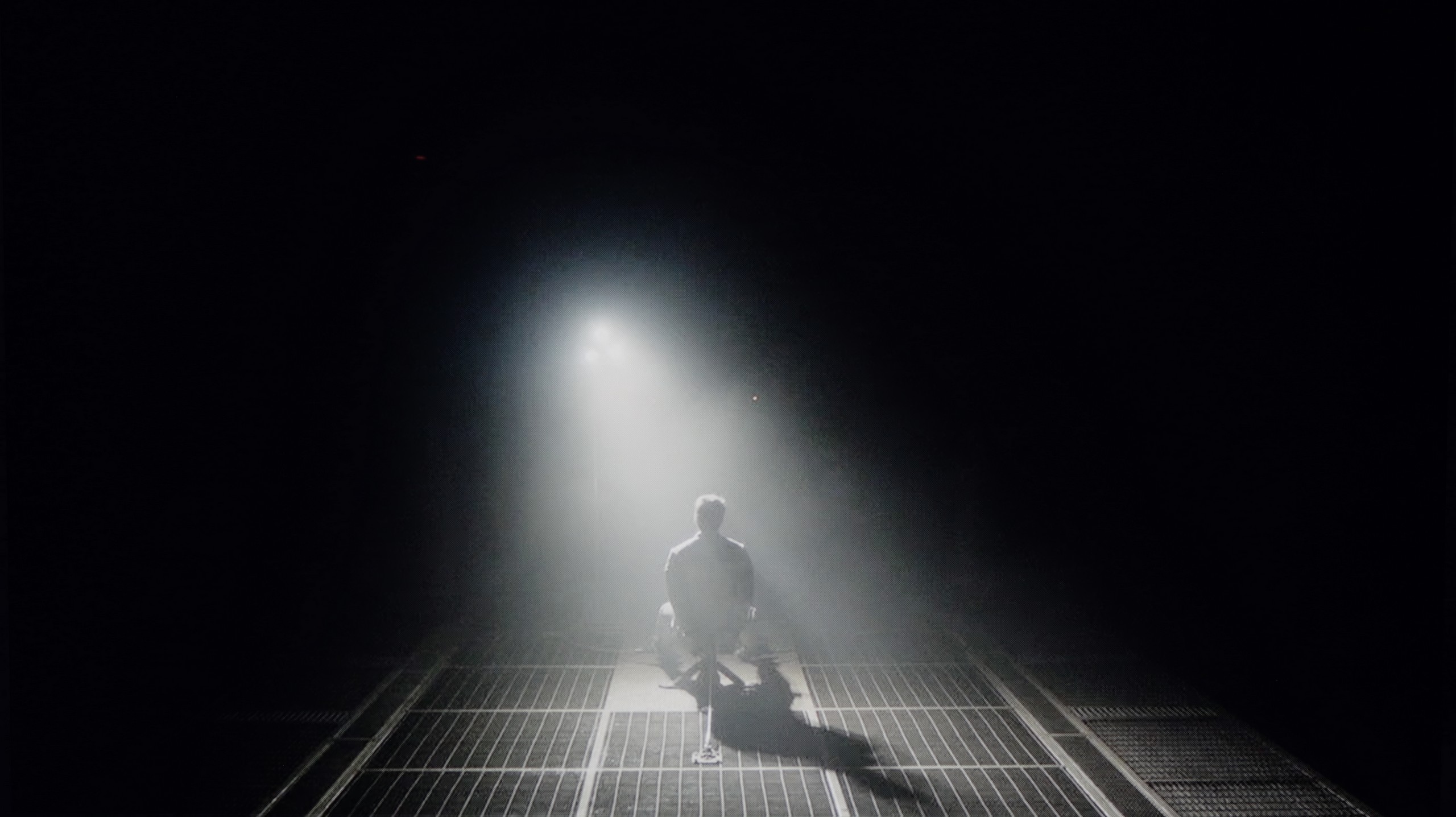
Philips PUS8359/12 in the 50-inch version is equipped with a VA panel. We highlight this quite strongly, as the manufacturer is known for intermittently using IPS/ADS panels depending on the diagonal size. This is particularly important in the context of contrast and black levels, which are the primary criteria in assessing image quality. The panel itself uses direct LED backlighting; however, it has not been supported by any local dimming system, which is rather obvious when considering the device's price range. Nevertheless, the use of this type of screen allows for several rows of better black levels and contrast compared to the aforementioned panels that do not have advanced backlighting systems. The simple design of the television has positively affected the visibility of details in the blacks. Our first test scene from the film "Oblivion" showcased quite good blacks, but also excellent separation of lights, which is not an easy task even for much more expensive units. The second material prepared from the film Sicario 2 also presented itself decently. Although due to construction flaws, some light bleeding can be noticed, the details themselves are well visible, and it's hard to criticize them. The fact remains, the black levels could be deeper.
It’s worth noting that the test concerns variants with a VA panel, which perform several times better in the categories of black levels and contrast than the 55-inch version equipped with an IPS panel. Thanks to the higher native contrast (although it’s not the top result among VA panels), the tested scenes looked significantly better – without noticeable greyish hues or the typical washed-out shadow effect found in IPS panels. The black levels in the U8092F model can be considered really good and satisfying, especially in this price range. Of course, this is not a design equipped with local dimming, so it’s hard to expect spectacular results in very challenging scenes. On the other hand, we’re talking about a remarkably budget-friendly television that performs quite solidly in its category.
HDR effect quality
4.6/10
3.1/10
Luminance measurements in HDR:

Result
281 nit

Result
280 nit

Result
324 nit

Result
290 nit

Result
320 nit

Result
212 nit

Result
173 nit

Result
265 nit

Result
90 nit

Result
250 nit
Scene from the movie “Pan” (about 2800 nits)


Scene from the movie “Billy Lynn” (about 1100 nits)


Static HDR10


HDR luminance chart:
Samsung U8000F (VA)
Luminancja HDR
Luminance of RGB colors
Philips PUS8359 (VA)
Luminancja HDR
Luminance of RGB colors
Philips PUS8359 didn't impress us with its performance in HDR materials. This model is capable of generating a maximum brightness of 320 nits, and often even less. Such results, combined with the lack of support for HDR Dolby Vision, mean that the image will be significantly darker compared to the source material. Therefore, it would be more beneficial for this television to play SDR content. This is also suggested by the quite low coverage of the DCI-P3 colour gamut at 83%, resulting in significant colour deficiencies. The fact remains that the television supports an HDR format based on dynamic metadata; however, HDR10+ is such a niche format that it doesn't offer any major advantages.
While the U8000F with its VA panel can still be praised for decent blacks, there are no such accolades when it comes to brightness—particularly in HDR scenes. The television only achieves a maximum of just under 250 nits, which is simply too low to talk about any impressive light effects. Bright elements appear washed out, and scenes that should shine look rather flat. An interesting situation occurred during our testing of a scene from the movie Sicario 2— the screen noticeably darkened, as if the television was trying to hide its limitations in displaying blacks. One might get the impression that the device artificially darkens the image to improve contrast, but in practice, the effect doesn't make much difference, apart from the fact that we see less on the screen. Additionally, there’s the issue of colours—the U8000F doesn’t support a wide colour gamut, so one shouldn’t expect vibrant, saturated hues known from better models. The HDR image here resembles a slightly brightened SDR and... maybe that’s not such a bad thing. For this model, it’s not worth expecting a cinematic experience—better to treat HDR as a modest addition.
Factory color reproduction
4/10
6.5/10


Factory Mode
After calibration
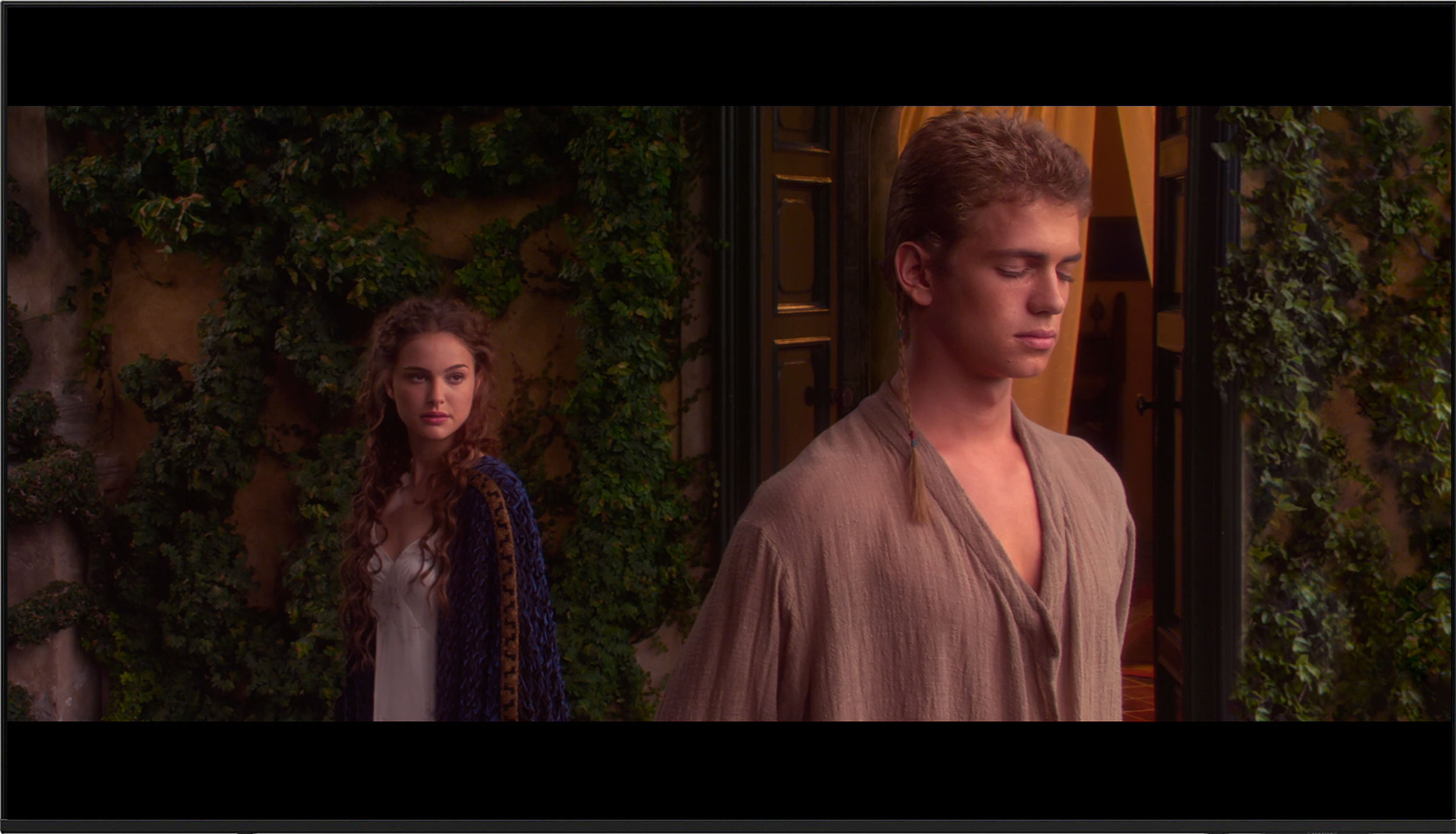
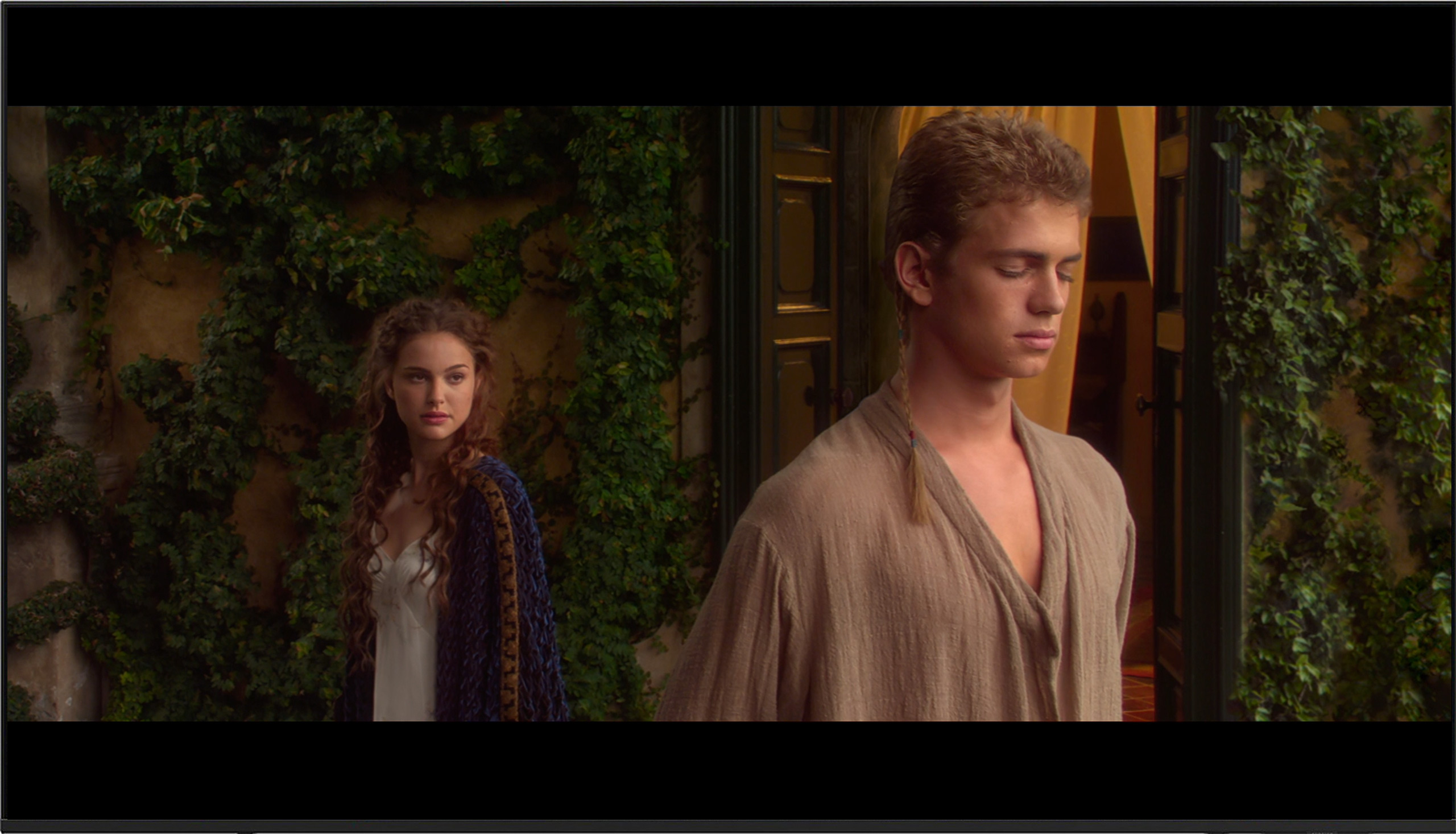
Factory Mode
After calibration
The best factory mode in terms of fidelity to the source material was "Film". This is what we used during our tests. Just like every other factory mode in televisions, it had its drawbacks. So we'll check what exactly was wrong with both SDR and HDR materials. In both cases, the white balance exhibited an excessive dominance of the green and red colour combination. This created a yellow tint spreading across the entire image, causing issues such as yellowed whites and problems with skin tones. This state of affairs was perfectly illustrated on the "ColourChecker" palette, where each of the tested samples was pushed towards its warmer counterparts. The foundation of the image is primarily contrast and black. These are represented by gamma charts and the EOTF curve. Looking at the first one, we can see a true rollercoaster, as both elevated and lowered gamma can be observed. The heavily elevated gamma caused visibility issues in black levels, whereas the lowered gamma resulted in a dramatic reduction in contrast. In this context, the EOTF curve performed significantly better, as it only slightly brightened the image.
Samsung U8000F has been tested by us in the best picture mode it offers out of the box – that is, Filmmaker Mode. This profile is supposed to theoretically provide a neutral, cinematic image, free of unnecessary enhancements and artificial beautifications. In the case of SDR content – mainly in HD or SD resolution – the television already presented itself surprisingly reasonably right out of the box. The only noticeable imperfection was brightness management. The gamma chart showed some deviations – slight brightening or dimming of certain tones – but in practice, this did not significantly affect the viewing experience. For a television in this segment, it performs quite well.
However, the situation in HDR mode looks significantly weaker. Although white balance was still acceptable, colour errors were very evident. In the Color Checker test, almost every sample was outside the target point, and the image itself appeared unnatural – colours were skewed, sometimes too cool, and at other times simply dull and lifeless. The main issue lies in hardware limitations – the U8000F does not support the wide colour gamut of DCI-P3, so it is physically unable to reproduce the colours that the HDR standard intends. Unfortunately, this is evident in almost every more demanding scene.
Color reproduction after calibration
5/10
7.5/10




Philips provides a wide range of image calibration tools in both its higher-end and budget models. We utilised these tools and got to work, which wasn’t as easy as many of you might think. While we managed to model the white balance, significantly improve the gamma, and refine the EOTF curve in both cases, the deltaE errors remained exceptionally high. There are several reasons for this situation, which are directly related to the low coverage of the DCI-P3 colour gamut and the maximum brightness of the unit in HDR material.
Right out of the box, the U8000F offered a pretty decent picture in SDR for its price range. We managed to tweak it a bit further – we reduced a slight purple tint and improved the gamma characteristics, giving it a more natural curve. Despite these adjustments, the TV still has a tendency to overly brighten the brightest details – the gamma chart shows a clear break that cannot be fully corrected.
On the other hand, in HDR mode, it’s noticeably weaker. It's hard to talk about any significant improvement – despite attempts to fine-tune the settings, the picture still presents considerable colour errors. A Delta E exceeding 7 indicates noticeable deviations that we couldn’t effectively reduce. Unfortunately, this is a limitation of the construction itself – the U8000F simply wasn't designed for serious HDR. In daily SDR viewing, it performs quite well, but for HDR content... it’s best not to have overly high expectations.
Smoothness of tonal transitions
7.4/10
9.5/10







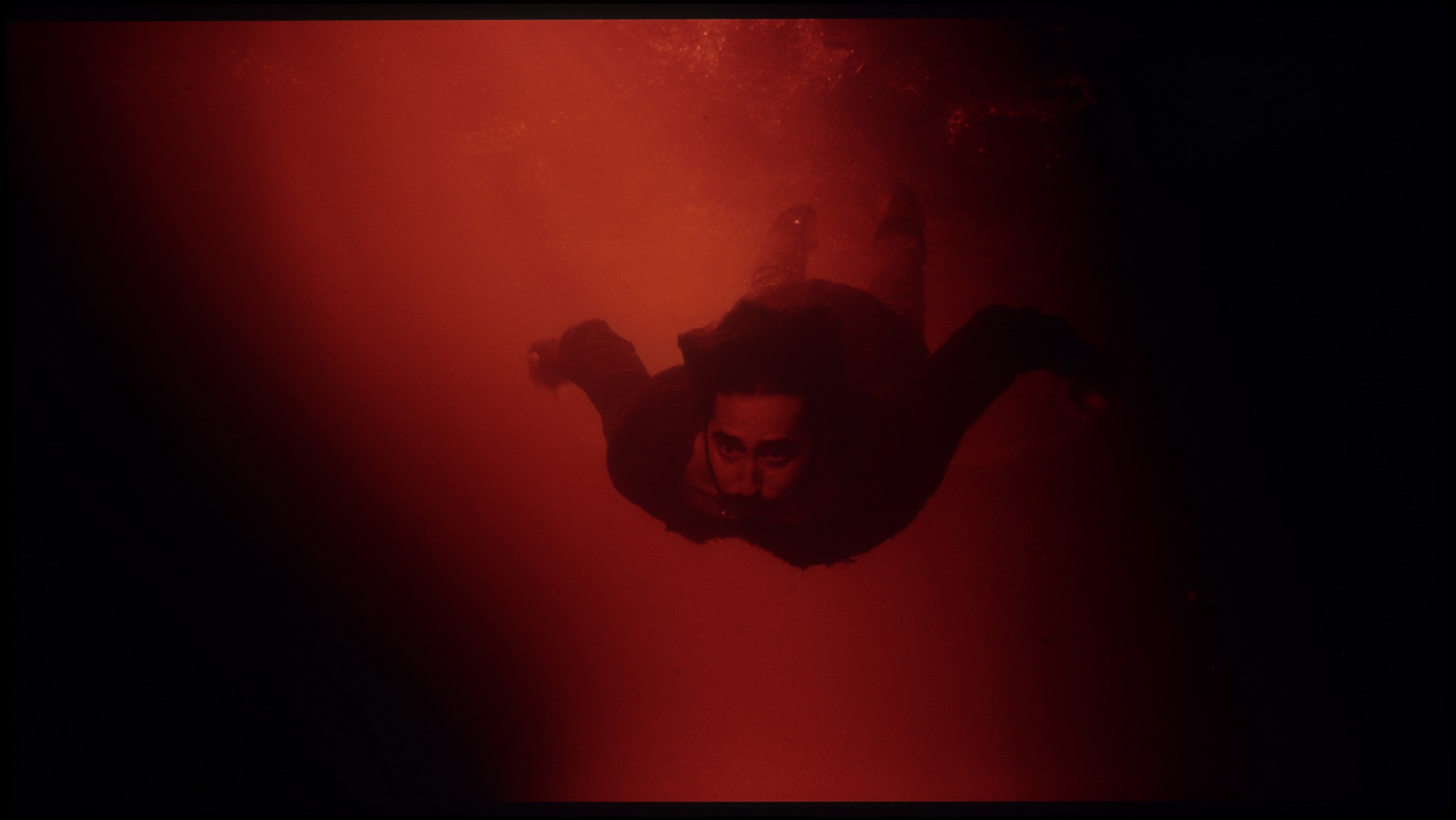




The fluidity of gradation in PUS8359 is at a good level. Practically every scene has preserved tonal transitions. The most difficult scene, which is the second from the film "The Green Knight", turned out not to be the proverbial "killer" and showed that the tested television, given its price range, performs excellently. The only thing we can "pick at" is the darkest scenes, where some inconsistencies can be seen here and there, but this is rather selective. Nonetheless, we rate the fluidity of tonal transitions very well. However, we must mention that this feature is not available in HDR materials.
One of the essential elements affecting the perception of the image is the way in which the television handles tonal transitions – that is, blending colours and shades without clear boundaries. In the case of the Samsung U8092F model, this performed really well. On the test screens, we did not observe any visible banding or disturbances in the colour gradients. The image retains a natural character, without excessive digital interference, which unfortunately tends to be the norm in this class of equipment. Minimal imperfections appeared in very bright sections, but they are practically unnoticed and do not affect the daily use of the television.
Image scaling and smoothness of tonal transitions
6/10
5/10
Smooth transition function

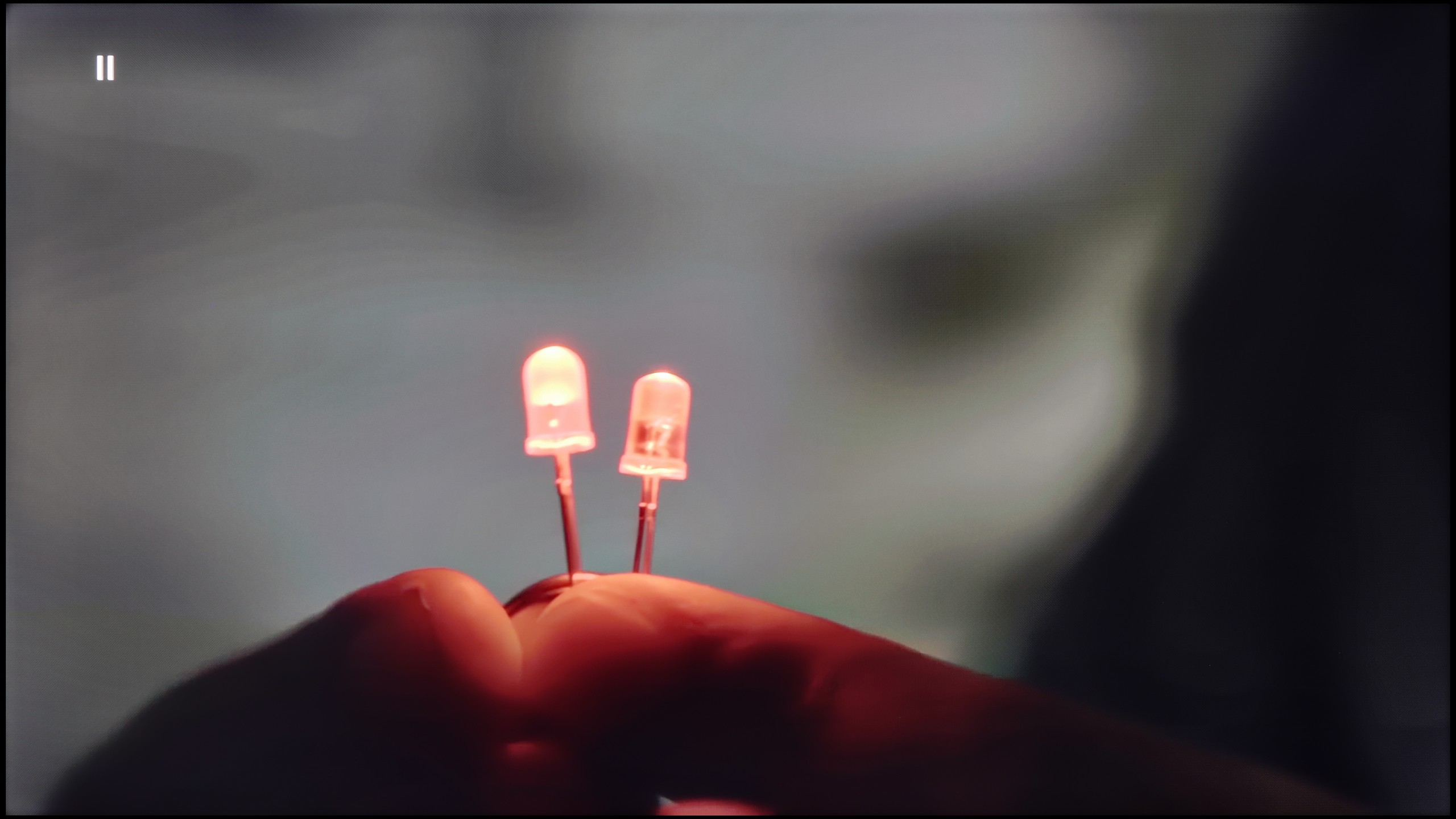
Image without overscan on the SD signal


In this paragraph, we will look at two functionalities. We will once again take a look at the feature responsible for tonal transitions, but we will also check how the television handles image scaling. The option responsible for smooth gradation is called "Distortion Reduction." As we have established, it quite effectively smooths out inconsistencies. However, we must point out two things: we cannot enable it for HDR material, and it blurs details in films.
The tested television does not boast the best image scaling. The overall blurriness of the image is quite noticeable, but what’s worse, it blurs details. This is particularly evident on the branches and hair of the model. There is also a characteristic white halo around the character.
When it comes to how the Samsung U8000F handles lower-quality materials, we have to admit that Samsung has made progress compared to its predecessor from last year – the DU7192 model, which theoretically occupies the same place in the lineup. This year’s model is equipped with a feature that improves the smoothness of tonal transitions, which has been implemented much better than last year. Yes, the television still uses quite strong algorithms that can distort details or remove film grain, but still – it can be confidently said that it works effectively. However, not everything has gone perfectly. The U8000F has noticeable issues with slight image stuttering when watching very old content in very low resolution. If someone plans to play their old VHS tape, they must be prepared for the image to look slightly “choppy”.
Blur and motion smoothness
3.8/10
5.5/10

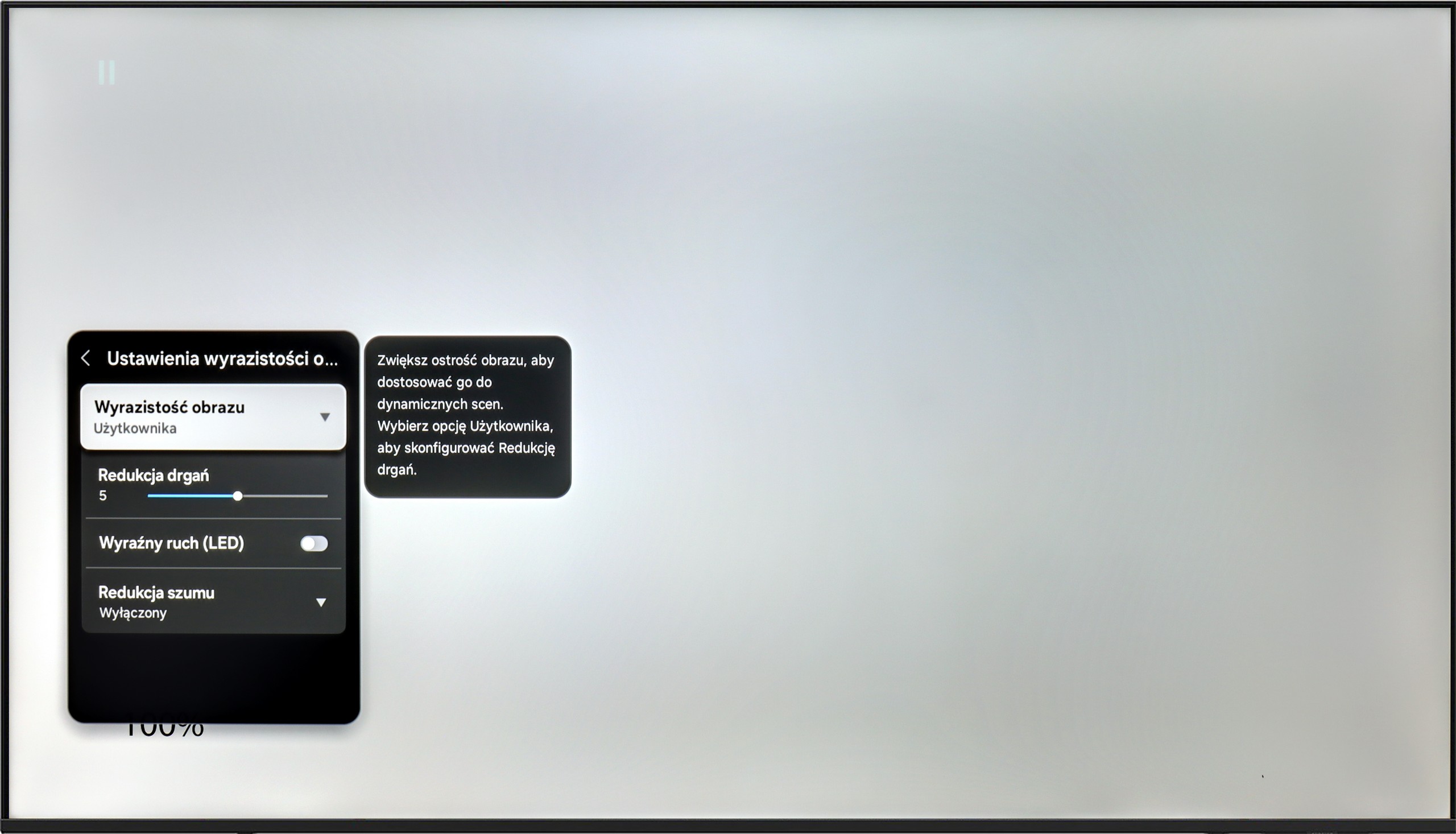
Blur (native resolution, maximum refresh rate):






Blur (BFI function enabled):
Image flickers in this mode



Smużenie ():
Smużenie (Upłynniacz ruchu 4K@60Hz):



Philips PUS8359 will not be the best television for sports. The reason for this is the lack of implementation of even the basic motion smoothing feature, which was to be expected given the price of the device. We also note that we are dealing with a VA panel, whose sharpness does not stand at the highest level by itself. This type of panel is mainly associated with high contrast, which comes with a rather slow response time, as we can clearly read from the matrix analysis results. As you can see, from the pictures captured in fast motion, the image is blurred typically for this type of panel. While it may not be the ideal option, it can conditionally be used for watching sports; however, one must keep in mind the less-than-sharp motion. It is worth mentioning that movies will be characterised by judder since the television does not possess any, not even the simplest, motion smoother.
The Samsung U8000F comes with a 60 Hz panel, so right from the start, it's clear that you can't expect miracles. It's simply the standard in this class – sufficient for everyday viewing, but without any fireworks. The TV offers one motion smoothing slider – a function called "Motion Blur Reduction", which allows us to adjust the smoothness of the image in films. Higher settings provide a more "theatrical" and smoothed effect, while lower settings maintain the original character of the film with a slight 24p effect. Interestingly, there is the "LED Clear Motion" feature, or BFI mode – which inserts black frames between the frames of the image to improve motion sharpness. However, in practice, the screen flickers significantly when this is activated, and it's best to treat this as more of an experiment rather than something that genuinely improves the gaming experience.
Console compatibility and gaming features
4.7/10
4/10
- ALLM
- VRR
- VRR range6048 - 60Hz
- Dolby Vision Game Mode
- Correct implementation of HGIG
- 1080p@120Hz
- 1440p@120Hz
- 4K@120Hz
- Game bar

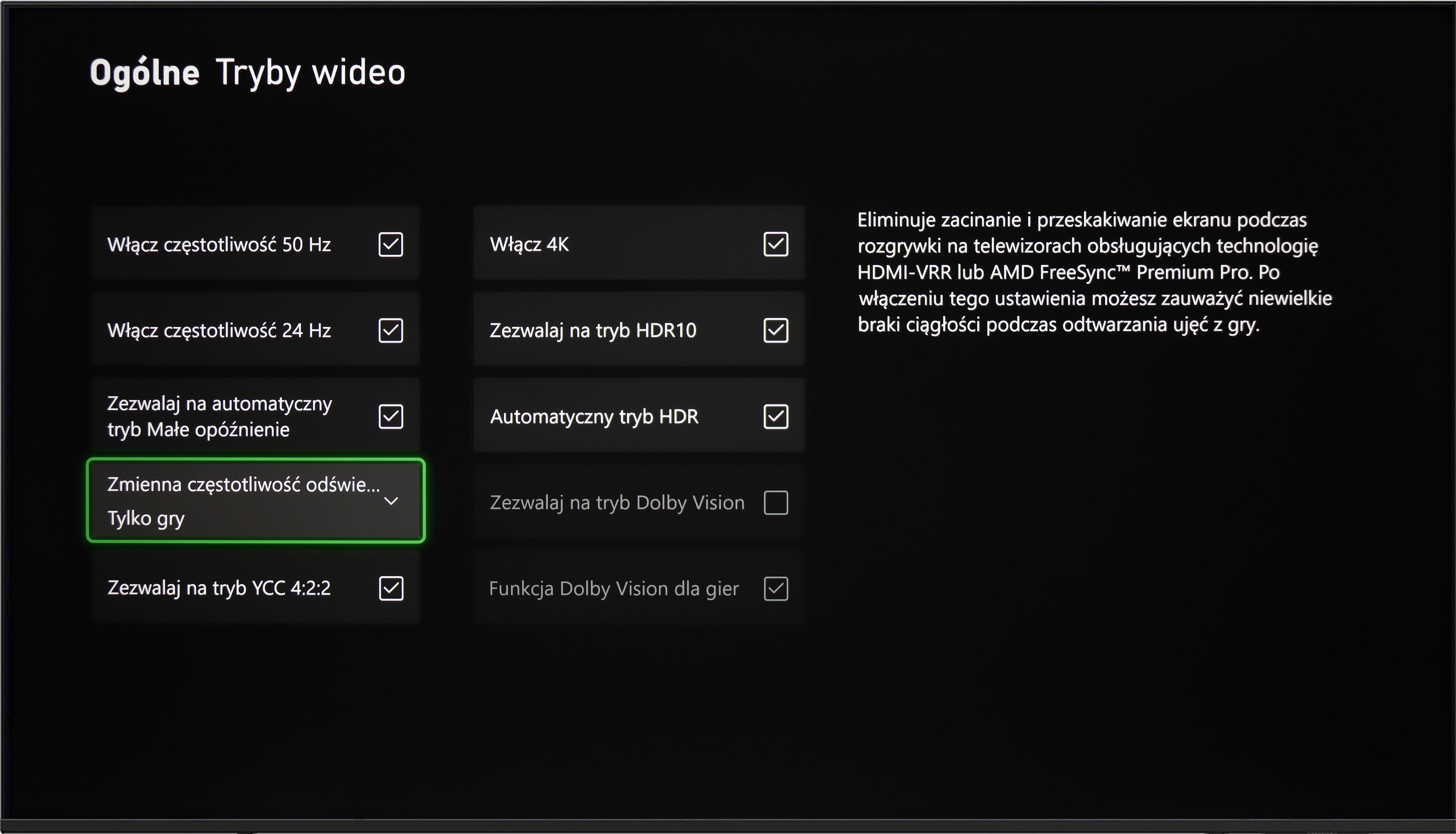

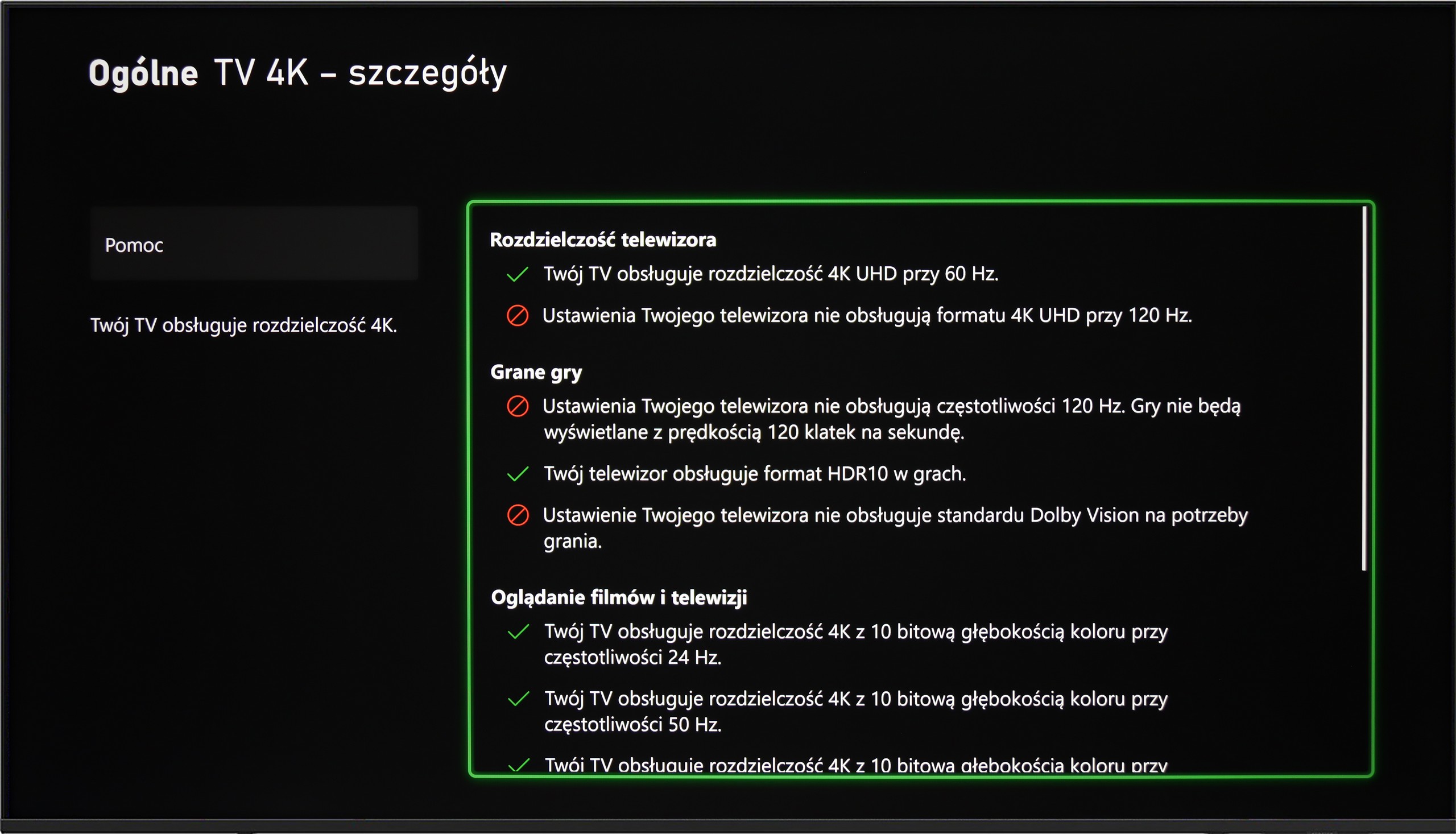

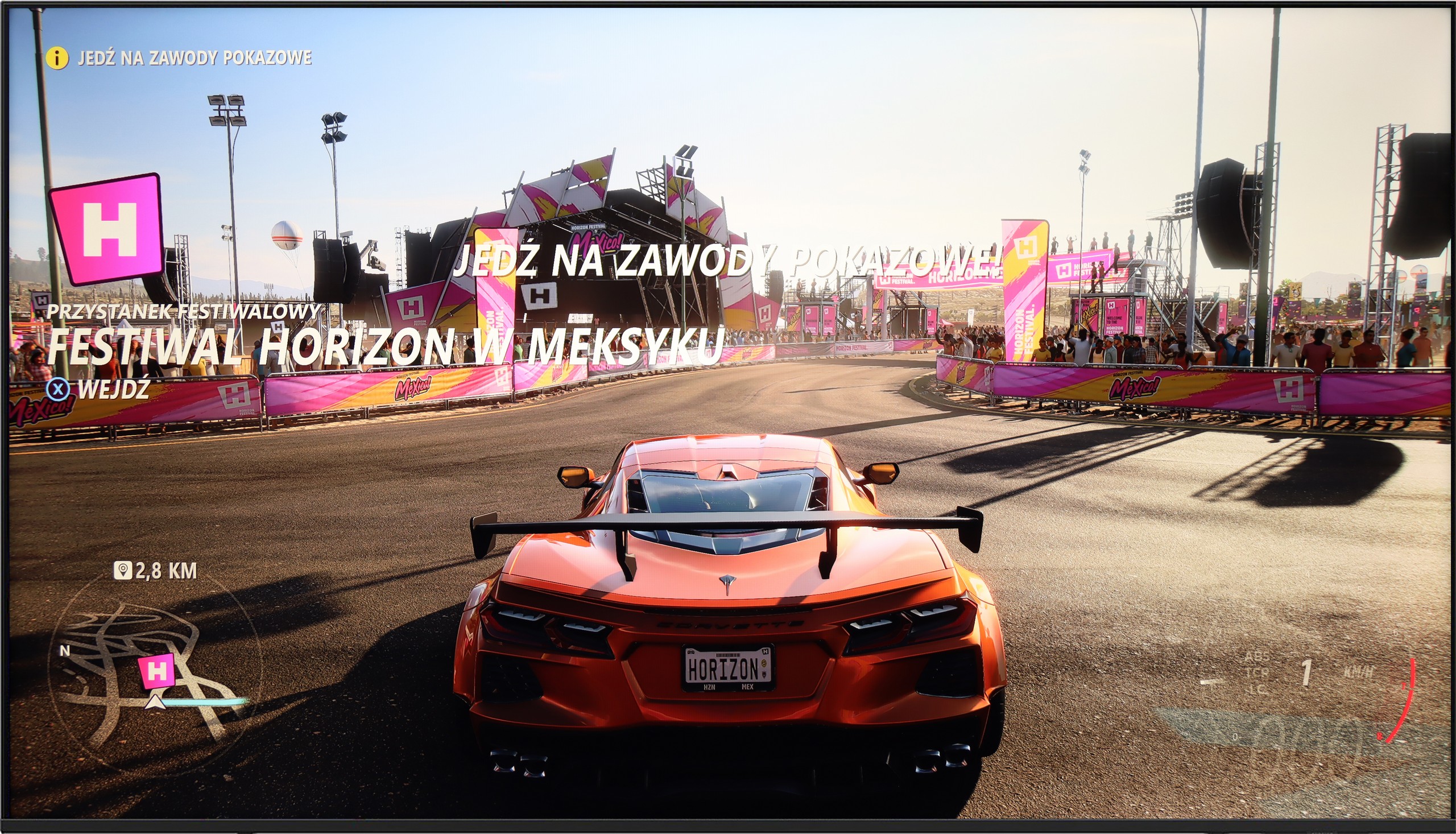

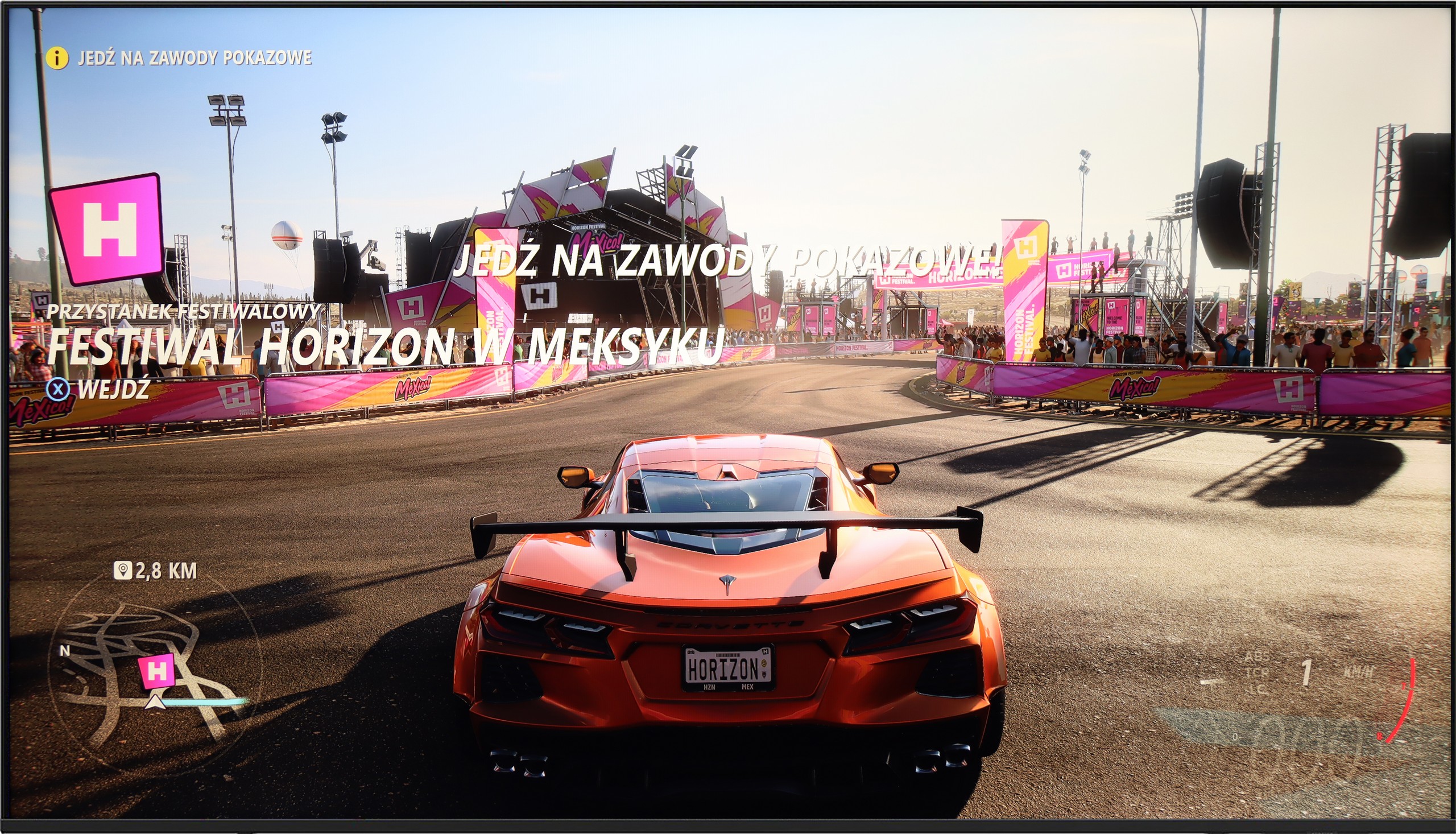
It won’t be a surprise if we say that Philips PUS8359/12 only has the most basic support for consoles. Once we connect the console, we can expect features like VRR and ALLM. This is quite pleasing for the former, as life has shown that even in more expensive units, there can be issues with this. A nice touch is the implementation of a special GameBar that allows changing settings on the "fly", so we won't have to exit the gameplay and become unnecessarily distracted. This feature also allows for adapting the gameplay to the needs of individuals with disabilities, which will certainly be extremely beneficial.
Samsung U8000F offers a basic set of features for gamers, which can still prove sufficient for less demanding users. Here we have an automatic gaming mode – when a game is launched on the console, the TV switches to low-latency mode by itself, significantly improving response time. We also find the VRR feature, or variable refresh rate, which operates in the range of 48 to 60 Hz. This means that both Xbox and PS5 will not produce the 'tearing' effect on the screen – as long as we stay within this range.
Unfortunately, that's about it when it comes to advantages. Add-ons like Game Bar or higher refresh rates are reserved for higher models of Samsung from the 2025 line. In theory, the TV also supports the HGiG feature, which should adjust the HDR image to the intentions of game developers. Unfortunately – despite this feature appearing in advertising brochures and store materials – its setup on the Xbox console turned out, in practice, to be... impossible.
Input lag
10/10
10/10
SDR
HDR
Dolby Vision
The measured input lag when connected to the console was very good, with nothing to pick at. Both at FHD and 4K settings, we recorded delays of 12ms, and when adding the HDR format to the higher resolution, the lag dropped to 11ms. Each of these results should be considered more than satisfactory, as such a level allows for gameplay that is practically free of delays between controller, eye, and screen.
The Samsung U8092F performed phenomenally in our input lag tests. Regardless of the resolution, the results were very low, which is truly impressive for this price segment. One can confidently say that gaming on this TV will not cause frustration due to significant delays between what we do on the controller and what we see on the screen. For most gamers, even the more demanding ones, this result should be more than satisfactory.
Compatibility with PC
6/10
6/10


Connecting the Philips PUS8359 to a computer won't create major complications in terms of gaming. The latency is at a very good level, and working at 4K HDR settings was associated with an 11 ms input lag, which is an imperceptible value on the line from eye to screen to mouse. The tested TV also supports chroma 4:4:4, making work with text files convenient. This model does not support G-Sync and offers a refresh rate of 60 Hz, which can be a significant drawback for PC gamers. Therefore, the gaming rating is lower, although the device performs excellently in everyday office tasks.
Working on the computer with this television is a true pleasure. The Samsung U8092F supports chroma 4:4:4, and even though it has a VA panel, the readability of text is very, very good. The television is also suitable for occasional PC gaming, mainly due to its low input lag. However, it should be noted that the G-Sync feature does not work on this model, which is strange because VRR worked without issue on the console.
Viewing angles
3.4/10
3.7/10
The decrease in brightness at a 45-degree angle is 65%. This means that even a slight shift from the center of the screen can cause discomfort related to color degradation and image fading. This is rather a characteristic feature of the vast majority of VA panels that lack an angle coating.
TV efficiency during daytime
4.7/10
3.8/10

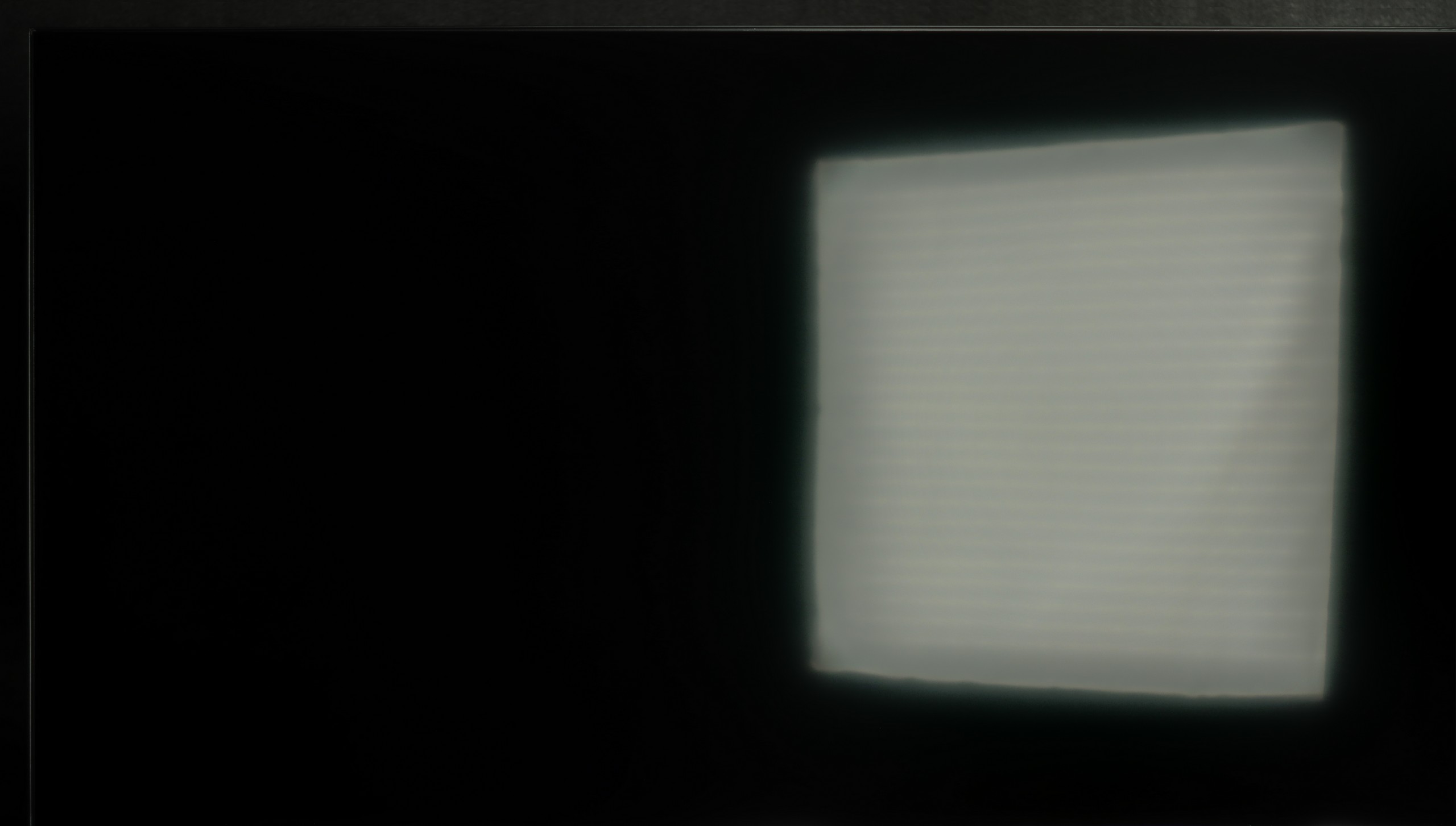

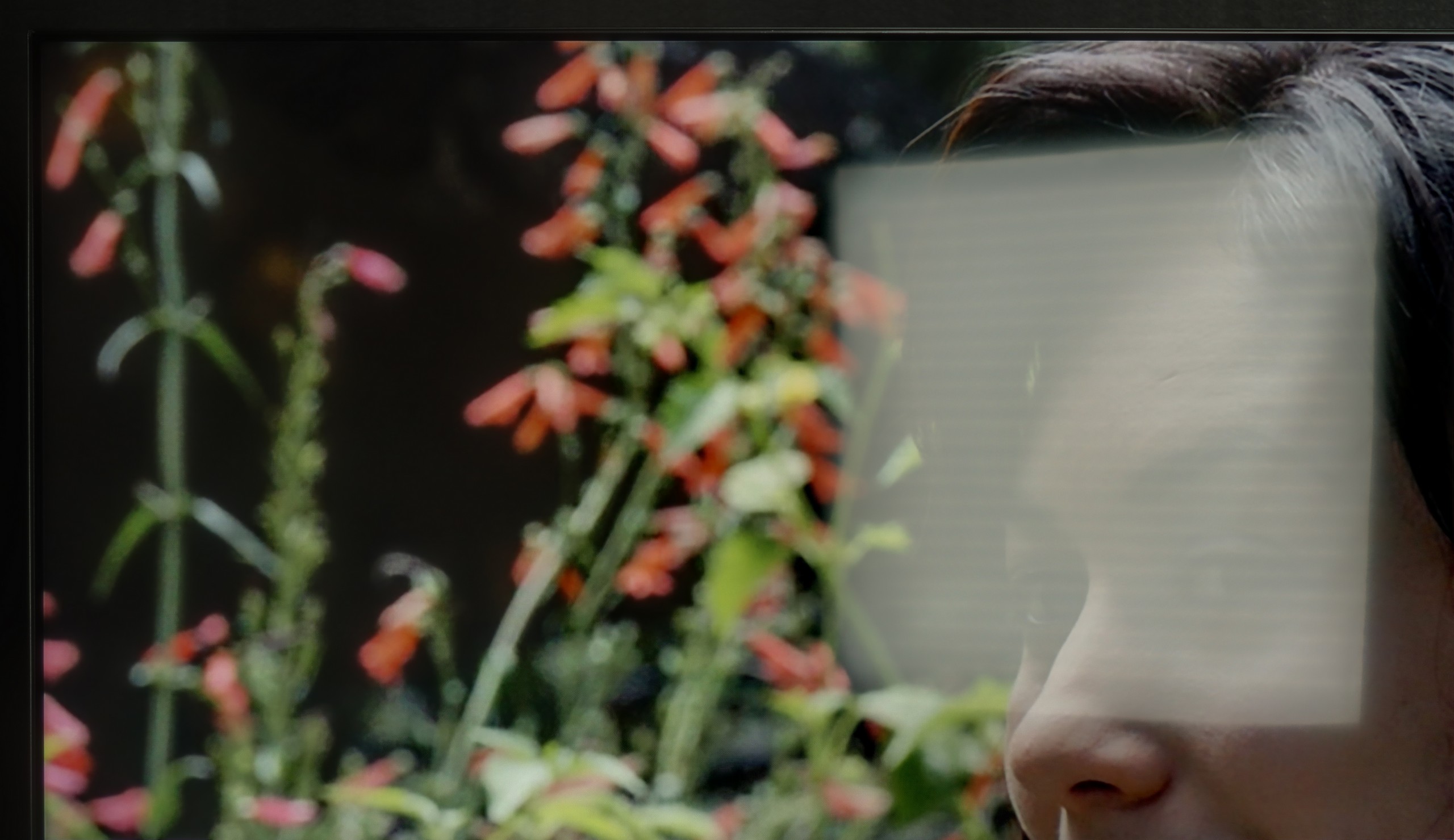
Matrix brightness
Average luminance SDR
Samsung U8000F (VA): 204 cd/m2
Philips PUS8359 (VA): 318 cd/m2
The screen Philips PUS8359/12 has a satin finish. This type of panel finish allows for quite good performance in keeping light reflections in check and provides fairly comfortable viewing of the television during the day. It’s worth mentioning that the maximum brightness of the television in SDR content is about 320 nits, which is a reasonable result, especially since the brightness is maintained even at 100% screen white fill.
Thanks to the satin finish of the Samsung U8092F panel, it handles reflection reduction quite well. The screen doesn't act like a mirror, and the colours – given the capabilities of this class of device – remain fairly saturated, even in somewhat brighter conditions. Unfortunately, the finish alone won't perform miracles. The TV is simply too dark to effectively cut through very challenging lighting conditions. If we place it opposite a light source (e.g. a large window or a strong lamp) – unfortunately, one must reckon with the fact that not everything will be clearly visible on it.
Details about the matrix
Subpixel Structure:

Panel uniformity:
TV features
5.2/10
5.5/10
- HDMI inputs3 x HDMI 2.0, 0 x HDMI 2.13 x HDMI 2.0, 0 x HDMI 2.1
- OutputsToslink (Optical audio), eARC (HDMI), ARC (HDMI), Mini-Jack (Headphones)eARC (HDMI), ARC (HDMI)
- Network InterfacesWi-Fi 2.4GHz, Wi-Fi 5GHz, Ethernet (LAN) 100MbpsWi-Fi 2.4GHz, Wi-Fi 5GHz, Ethernet (LAN) 100Mbps
- TV receptionDVB-T, DVB-T2, DVB-S, DVB-S2, DVB-CDVB-T, DVB-T2, DVB-S, DVB-S2, DVB-C
Classic features:
- Recording to USB (terrestrial TV)
- Recording programming
- Picture in Picture (PiP)
- RF remote control (no need to aim at the screen)
- Backlit remote control
- Teletext
- Audio only mode
- Possibility to connect Bluetooth headphones to the TV
- Possibility to simultaneously use Bluetooth headphones and the TV speaker
Smart features:
- AirPlay
- Screen mirroring (Windows Miracast)
- Wyszukiwanie głosowe
- Voice search in native language
- Ability to connect a keyboard and mouse



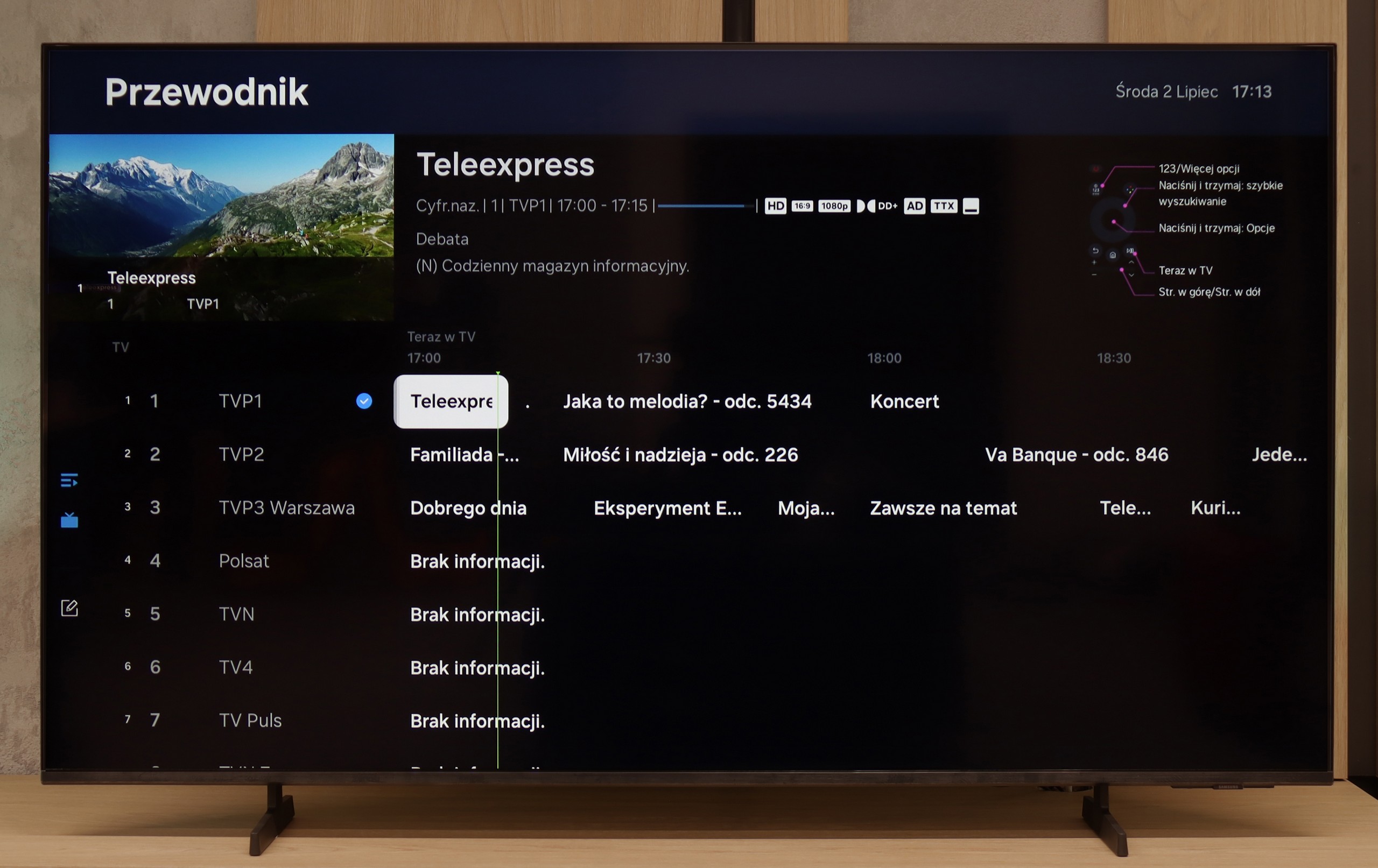
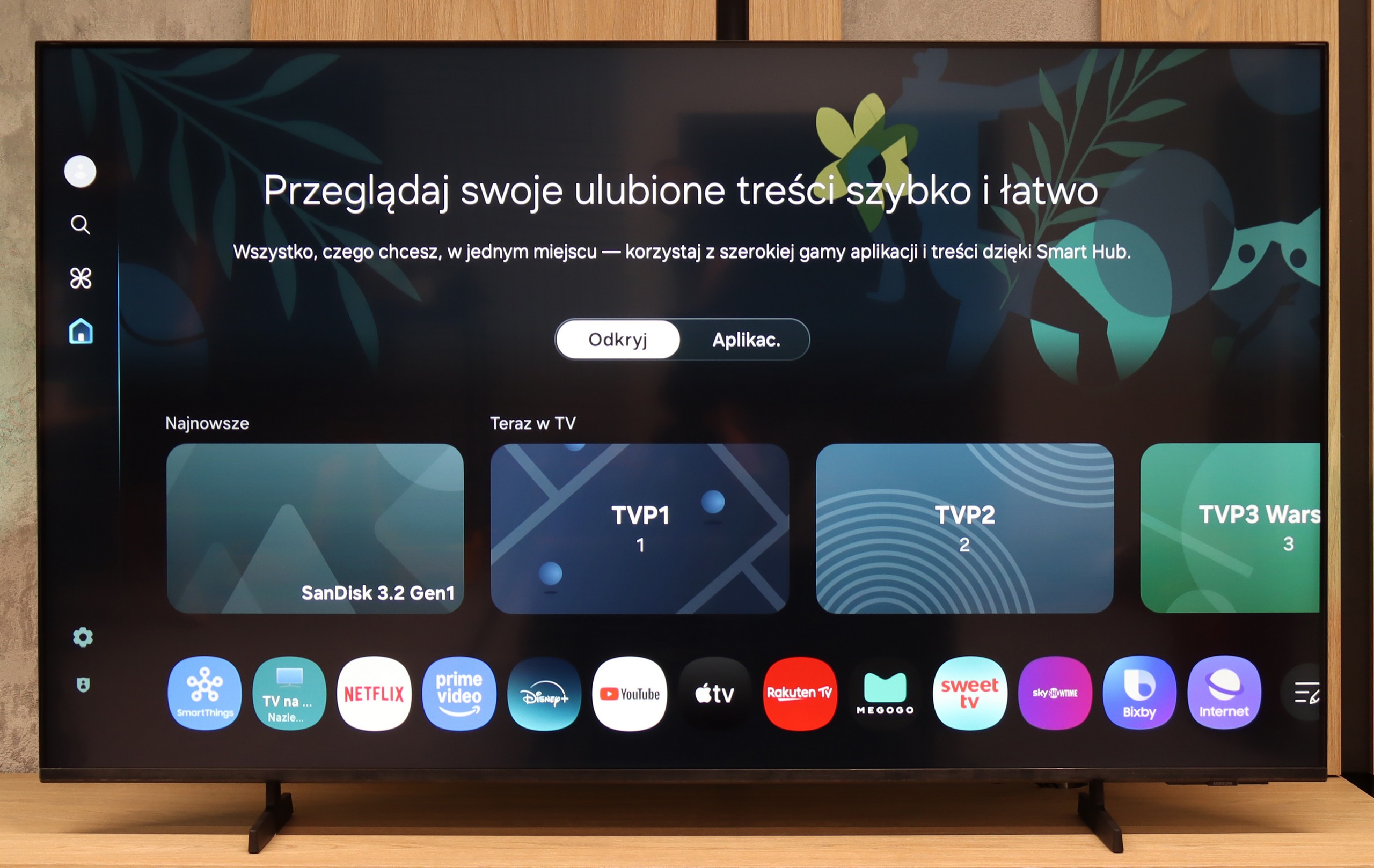
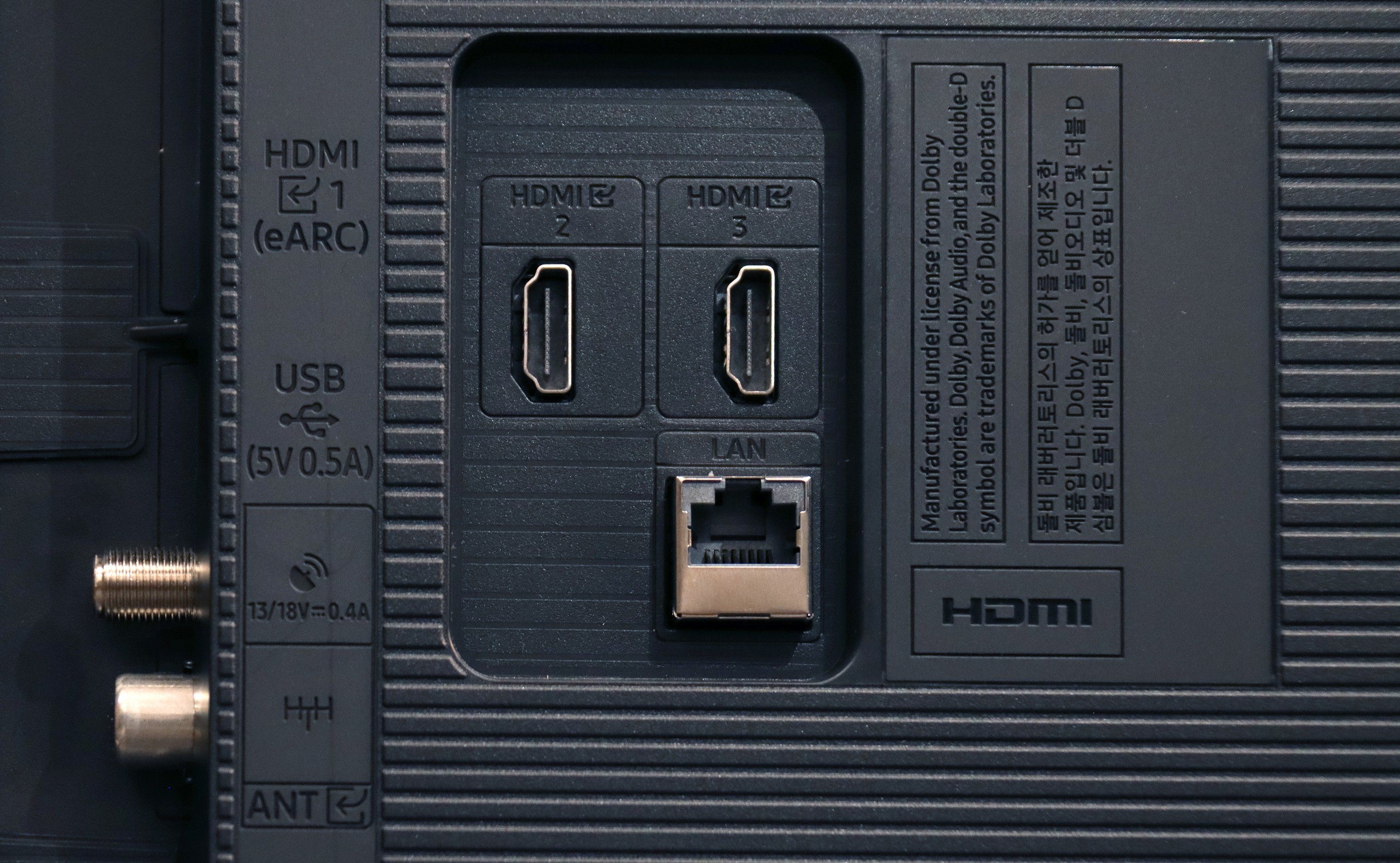
It’s hard not to mention the biggest differentiator of the manufacturer’s TVs first. We’re of course talking about the colorful Ambilight backlighting, which is placed on the back of the device and displays colours customised to what’s happening on the screen, often allowing for an even greater immersive experience. The operating system responsible for the TV’s functioning is Philips' proprietary system cleverly named TitanOs. It is definitely more closed off and limited in terms of app resources than is the case with this manufacturer’s TVs based on GoogleTv. Besides the lack of significant applications, its closed nature also reveals itself in another aspect. We won’t be able to do basic things like programming recordings or recording to USB. People using Apple devices may also feel disappointed by the absence of AirPlay, which allows for easy screen streaming. Fortunately, there is an option to connect a keyboard and mouse for easier navigation through the TV’s menu. It’s worth mentioning that there is the possibility of connecting headphones, but only wired ones. If we plug them in, we can also play audio through the TV’s speakers. It’s also worth adding that controlling the TV happens via IR, not Bluetooth, which is quite inconvenient these days.
In summary: TitanOs has quite a few “buts,” especially when we are aware users needing and using various streaming platforms. It’s rather an option for those limiting themselves to the so-called holy trinity, which is Netflix, YouTube, and CDA.
Samsung U8092F – like all this year's models from this brand – runs on the Tizen operating system. The system itself is really well developed: we have access to many applications (although not all), a well-developed smart home support, and various extras, including exclusive Samsung applications. There are also features like AirPlay and Chromecast, which allow us to easily connect our phone to the television and stream multimedia.
Unfortunately, as this is Samsung's cheapest series in 2025, the manufacturer decided not to include a solar remote. In the package, we find a classic infrared remote, which visually resembles the newer version, but unfortunately lacks voice functions. As for typical “television” extras – the recording function and the PiP (picture in picture) mode are missing. However, a plus is the HDMI eARC, which allows for easy control of the included remote for devices like a decoder or soundbar – and it does indeed work seamlessly.
Playing files from USB
8/10
8.7/10
Supported photo formats:
Maximum photo resolution:

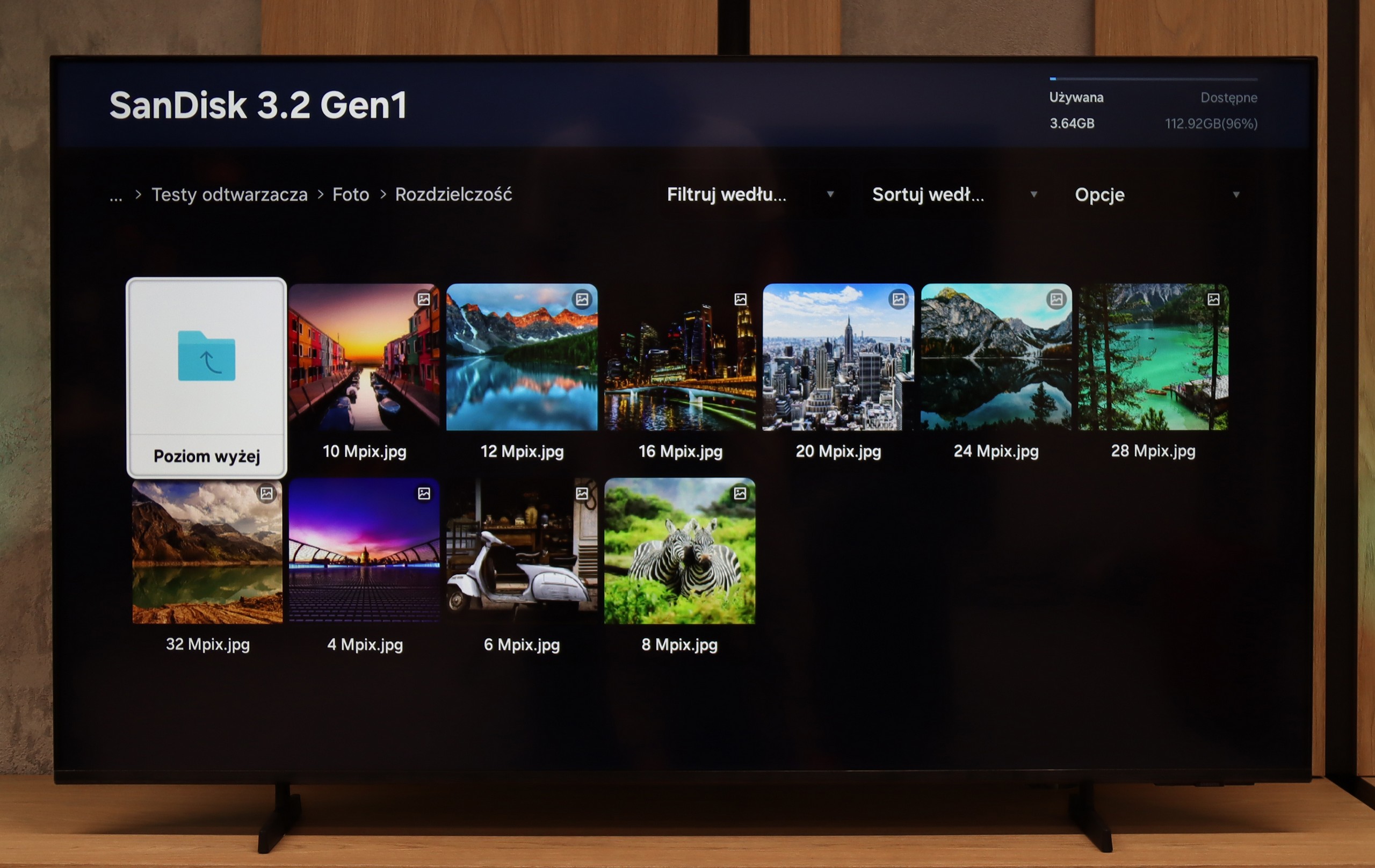
The default media player built into Philips PUS8359/12 offers quite a wide range of capabilities, but it also has its limitations. It plays virtually all video formats, with the obvious exception of Dolby Vision and the less obvious .asf, which is not commonly encountered. However, the issue lies in the lack of the H.265 HEVC codec at high bitrate. When it comes to photos, the player performs adequately, but it lacks support for some popular resolutions and formats, such as HEIC, used on Apple devices. The player performs best with audio, where it can be praised. Unfortunately, due to system limitations, there is no possibility to expand its features, which means we are left with what the manufacturer has provided.
Samsung U8092F handles playback of files fairly smoothly – the television supports most popular audio and video formats. Of course, it doesn't support Dolby Vision, but we simply won't find that in any Samsung model.
Some reservations can be made about the support for external text files – those that the user would like to add as subtitles to the film. During our tests, the television only played TXT files, and other formats, such as SRT or SUB, unfortunately did not work. This may not be a problem for everyone, but it's worth knowing. Perhaps it is an issue to be improved in the future with a software update for the television.
Apps
6.2/10
8.7/10














































Sound
6.1/10
5.7/10
- Subjective sound quality:6.1/105.7/10
- Dolby Digital Plus 7.1:
- Dolby True HD 7.1:
- Dolby Atmos in Dolby Digital Plus (JOC):
- Dolby Atmos in Dolby True HD:
- DTS:X in DTS-HD MA:
- DTS-HD Master Audio:
The built-in audio system in the Philips PUS8359 consists of a basic connection of speakers 2x 10 W each. As you can probably guess, you can't expect too much from such a configuration. Nevertheless, if we don't exceed 50% of the maximum volume, it won't give us any negative thoughts. We definitely recommend connecting even cheaper soundbars. These, due to a range of codecs prepared by the manufacturer, will certainly work very well. It's worth noting the implementation of Dolby Atmos and DTS-HD Master Audio.
U8092F doesn't pretend to have a home theatre on board. We get a standard set of 2 x 10 W, which sounds fine but without much emotion, though with a light bass. For everyday viewing, such an audio setup is more than sufficient. We were pleasantly surprised that it managed to play a film with the built-in Dolby Atmos codec (JOC) – although, of course, we're not talking about true surround sound here.


